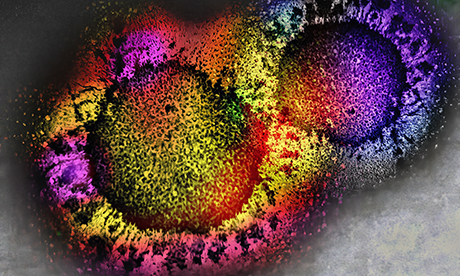Australia’s Covid-19 case numbers are on the rise again, with health officials signalling the arrival of new Omicron subvariants as a new wave begins.
It’s the first sustained uptick since the “winter wave” of Omicron subvariant BA.5, University of Melbourne public health researcher Nancy Baxter told RN Breakfast on Friday.
“You have things like wastewater testing, sewage testing, and numbers are going up there [now].”
New Zealand is also experiencing an increase in Covid-19 cases after experiencing two months of declining cases in August and September, following a Covid peak in July.
In Australia, fewer people are getting tested, but of those that do, a larger proportion are testing positive.
In some states, hospitalisations are increasing too.
“Those are all signs that actually the decline is over, and we’re starting to see the start of the new wave,” Professor Baxter said.
This wave is driven not by one new variant but a bunch of Omicron offshoots, signalling a “turning point” in the pandemic, according to Norelle Sherry, medical microbiologist and infectious diseases physician at the Doherty Institute.
“It’s no longer one big wave of a single variant being replaced by another single variant.
“We’re actually in more of a Covid soup – not my original phrase, but I think it’s definitely apt.”
What are the new subvariants in Australia?
The Omicron variant of the SARS-CoV-2 virus has been the sole “variant of concern” since Delta was downgraded to “previous variant of concern” in June this year.
And in the year or so since Omicron was first detected, it’s spun off into more than 300 subvariants (that we know of).
The big one – BA.5 – might be on the decline, yet still makes up most cases reported in Australia at the moment.
New Zealand’s Ministry of Health figures indicate that BA.5 is also the dominant variant in Aotearoa currently accounting for 78 percent of cases.
BA.2.75 – which was first detected in India in May and was nicknamed Centaurus – is still kicking around too.
In New Zealand, the Health Ministry says BA.2.75 and XBB variants were over-represented in terms of people getting reinfected with the virus.
Variant XBB is one of the new names popping up in the Australian context, along with BQ.1.
So far these new variants have mostly spread in different parts of the world: BQ.1 and its close relative BQ.1.1 feature heavily in Europe and the US, whereas XBB took hold in Asia, notably causing a wave in Singapore that peaked in mid-October.
They differ in how they came to be, too. BQ.1 descended from BA.5, so can be considered a sublineage of a sublineage.
XBB, on the other hand, is what’s known as a “recombinant”, the result of two different Omicron subvariants swapping parts of their genetic material – in this case, Centaurus and BA.2.10.1.
Other Covid recombinants have appeared over the past couple of years, Dr Sherry said, but XBB is the first to spread widely.
What BQ.1 and XBB do have in common is a whole bunch of mutations in their spike protein.
This means that even if you’ve had another subvariant of Covid or been fully vaccinated, the new Omicron viruses might be able to sneak past your immune defences.
It also means some treatments might be less effective. One study, which has not yet been peer-reviewed, found monoclonal antibody drugs, which work like antibodies made by your own immune system to fight a Covid infection, aren’t as effective against BQ.1 and XBB.
How do XBB and BQ.1 compare to BA.5?
Overseas data suggest XBB and BQ1 transmit faster than the currently reigning BA.5, but there is some good news.
“We don’t know for sure yet, but the signs are that their disease severity is similar to the other Omicrons,” Dr Sherry said.
During Singapore’s XBB wave, for instance, while case numbers rose, hospitalisations didn’t follow suit.
In October, the Singaporean Ministry of Health reported that people infected with XBB had a 30 percent lower risk of hospitalisation compared to those with BA.5. Continue reading
